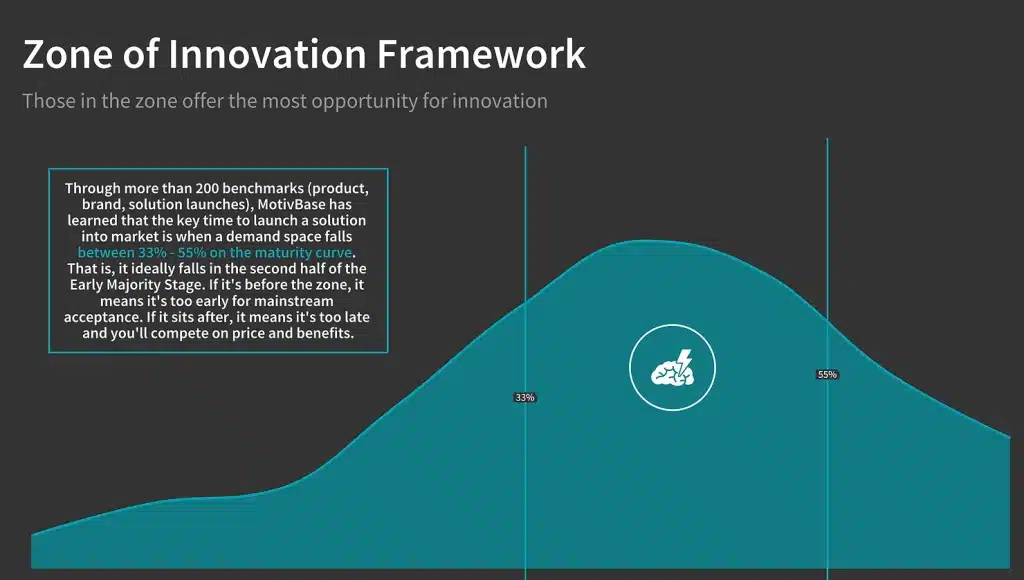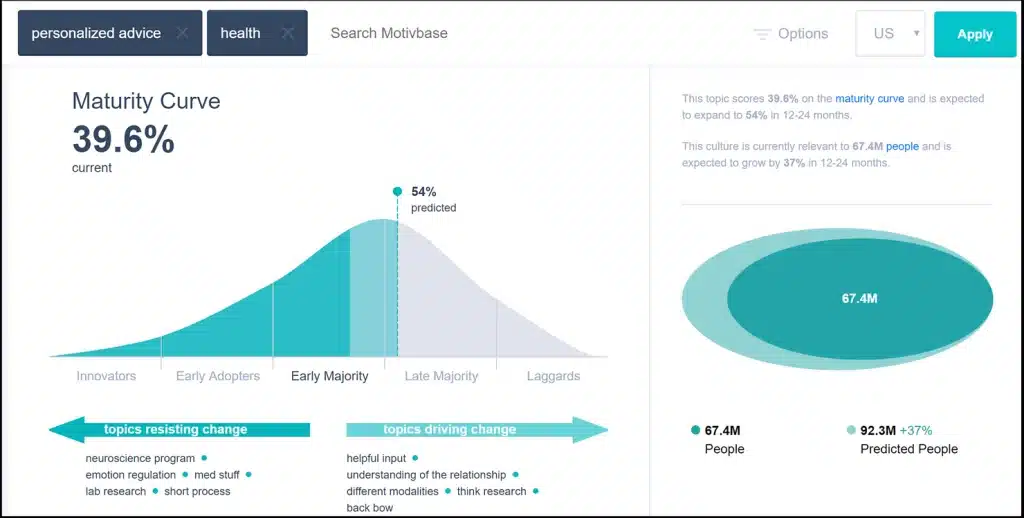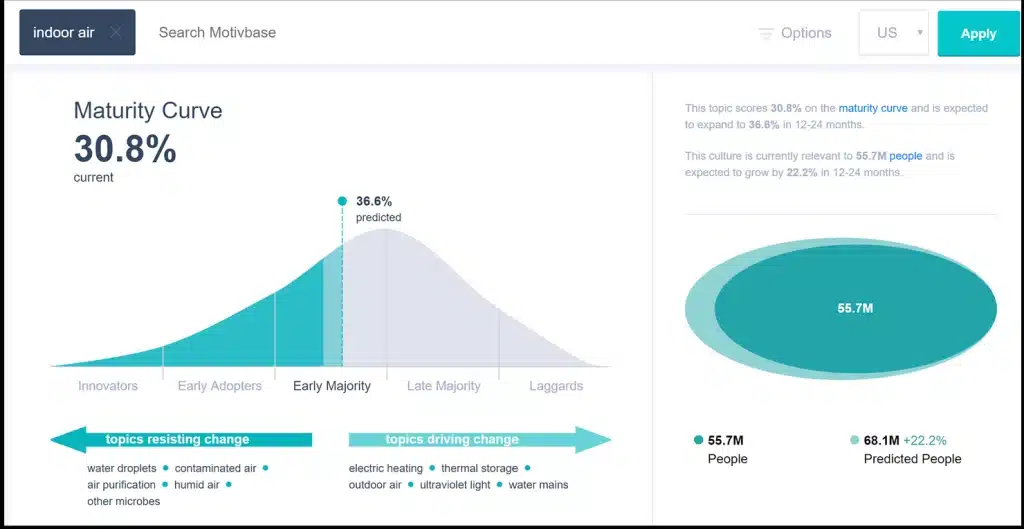The benefit of offering a research technology that works with big data is that it allows us run all kinds of experiments over time that teach us about new ways to extend the value of our work. One such breakthrough came with the development of the Zone of Innovation (ZOI) framework. ZOI came about because of my team’s diligent tracking of the application of our insights to the launch of new brands, products, ingredients, and even investments and acquisitions.

For those of you who don’t know our Trends product, it does an exceptional job at identifying the maturity of a topic, trend or idea. It tells us how consistently or inconsistently something is understood by the consumer. The visual we use for this maturity calculation is the Diffusion of Innovation Curve, which most of us are very familiar with. While the theory of the diffusion of innovation works really well conceptually, we found that for practical applications it needed a more precise framework of measurement. Especially if it were to help our clients in answering a really important yet often difficult question.
When is the right time to do something?
To answer this question our team created a series of hypotheses, and like any other scientific method, put those hypotheses to test by keeping a journal of all the outcomes delivered to clients and the resulting decisions made from it (in cases where the decisions were clear and track-able). After two years of data collection, my team discovered what we now call our ZOI.
So what is it and what does it tell us?
Simply put, it represents a window of opportunity. If something is launched against a demand space, it is likely to gain mainstream acceptance only if that demand space is projected to fall in the zone of innovation. That is, projected to fall between 33% and 55% on our maturity curve.
If the demand space in its future state falls before the ZOI, it means it’s still got innovation potential of course, but we don’t know if it will ever gain enough steam to be relevant to mainstream consumers. If it’s beyond the zone (after 55%), it means whatever action is taken will require our client to compete with others based on price, features and benefits and they are less likely to enjoy true first-movers-advantage.
Why is this so interesting and powerful?
Most of us are led to believe that the mark of a real innovative trend is when it sits in the early adopter stage on the maturity curve. It’s not wrong. It just lacks the critical context of the underlying goal of the project.
If the goal is to launch a new startup or brand new product that you’re willing to give 5+ years to, then the early adopter stage is the place to be. But if the goal is to identify ideas that will have mainstream appeal in a reasonable time frame (12-48 months is the window most of our clients operate in), then you need to look at demand spaces and opportunities that fall within the ZOI.
Examining the future state of demand spaces.
The benefit of our technology is that it tells us where a demand space currently is and where it will end up (and in what time frame). For example, in the area of health, personalization is a demand space that is already in the ZOI and will remain in the zone for the next 24 months opening the door to innovation in the short term.

Meanwhile, the space of indoor air quality is going to finally end up in the Zone of Innovation in the next 12-24 months, giving our clients the runway they need to bring something to life at the right time.

That is why ZOI is so powerful. It prevents us from needing to do this…

